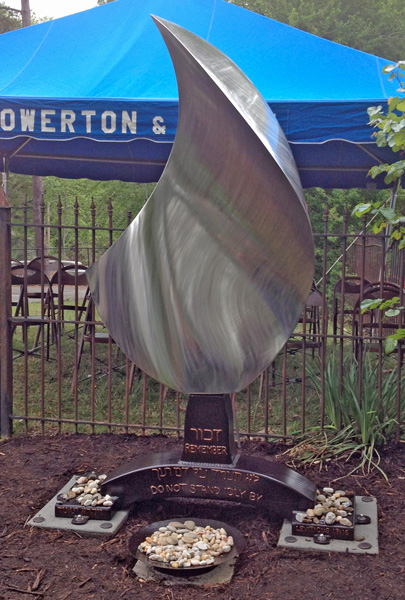
©2015
Remember
Remember is a sculpture commissioned by the Holocaust Speakers Bureau to mark the
burial site for ashes given to a U.S. soldier at the liberation of Dachau prison camp by one
of the liberated prisoners. That prisoner's charge to that soldier, "Never forget what you have seen here."
Seventy years later those ashes found a permanent resting spot in Durham, NC. Read extended
newspaper stories of their journey from World War II Germany to Durham here.

Dedicated on April 27th, the service was attended by several Holocaust survivors who
helped in the unveiling of the sculpture.
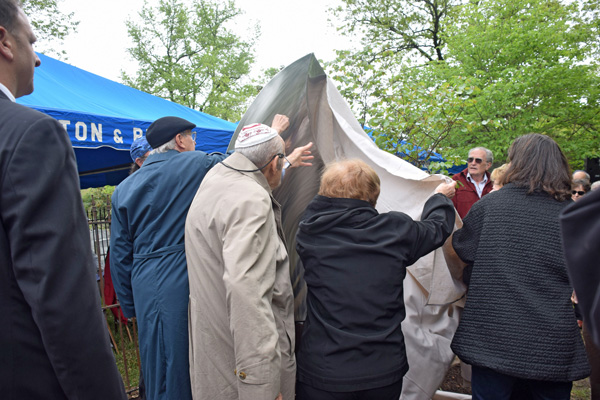
photo by Bonnie Hauser
Draped in a linen drop cloth the sculpture remained veiled through various speakers, including Sharon Halperin,
the driving angel behind making this project a reality. I too had a chance to express my gratitude for being brought in
to create the physical memorial.
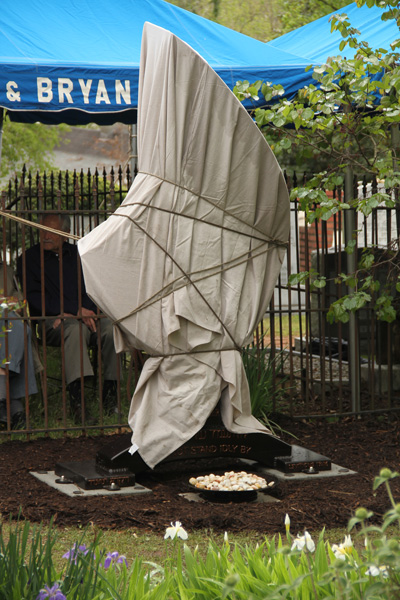
photo by Courtney Long
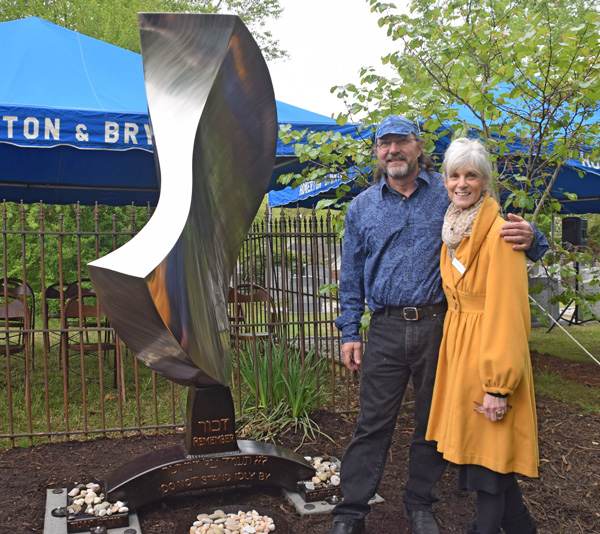
photo by Bonnie Hauser
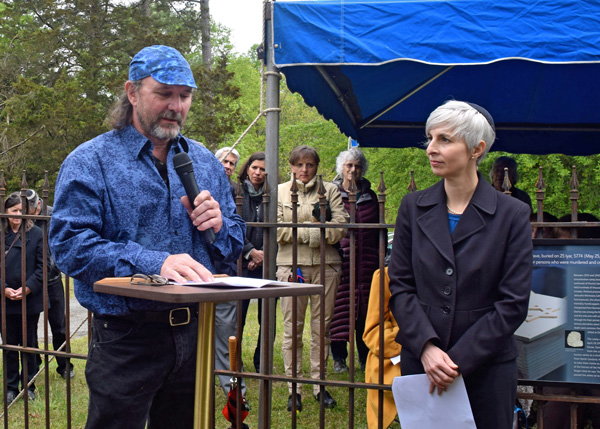
photo by Bonnie Hauser
I'll include a copy of my remarks at the end of this page. Part of the Jewish tradition at cemeteries is to
leave stones of remembrance on the grave markers. It is a symbol of visitation to the graves from those who
maintain a love and respect for those that have lived before. My wife Clay found a stone engraving company
in Minnesota that engraved river rocks with the word "Remember" in English and Hebrew just for the
dedication.
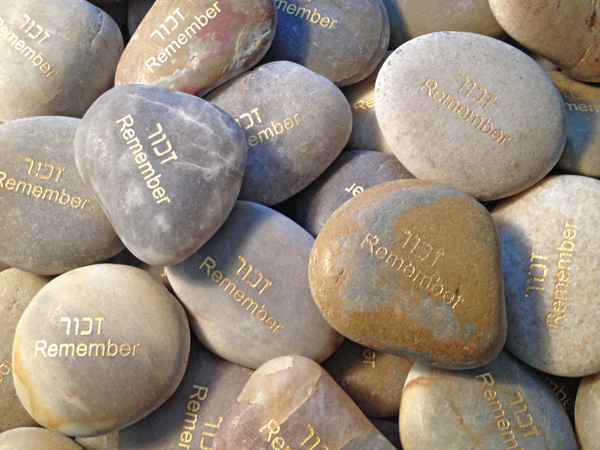
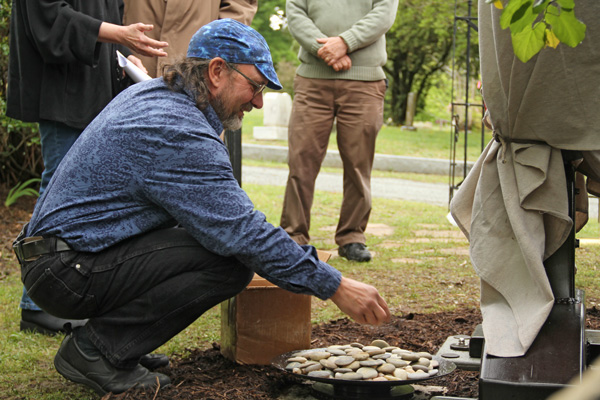
photo by Courtney Long

photo by Bonnie Hauser
It was an extraordinary day, and an exceptional highlight for me personally to have been involved in this project. Beside
the holocaust survivors came people from all walks of life, including WWII veterans, families of survivors, and just a
whole lot of people who can stand in sharp contrast to the lack of humanity that gave rise to the history that
inspired this memorial.
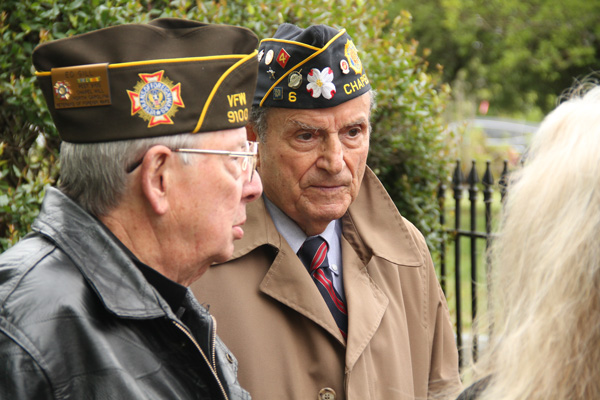
photo by Courtney Long
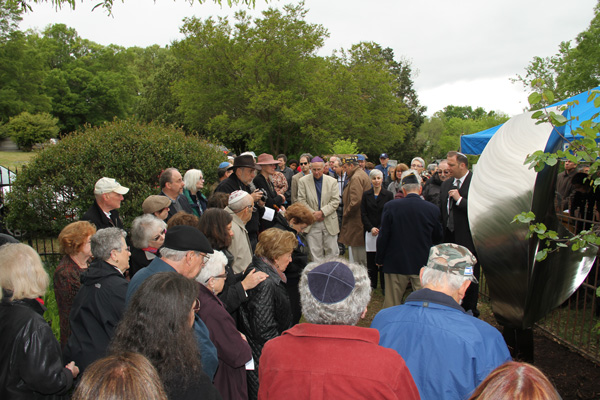
photo by Courtney Long
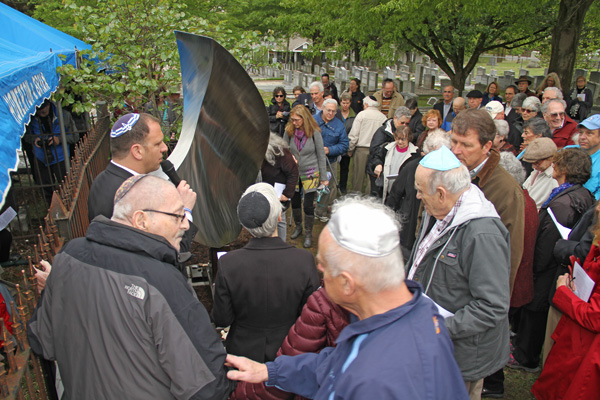
photo by Courtney Long
Finally, one of the holocaust survivors caught my attention in particular. Esther Gutman Lederman,
ninety years old and with a sparkle in her eyes wept when the sculpture was unveiled and melted my
heart. She later sent me her autobiographical account of her war experiences, a beautifully written book
called Hiding for our Lives: The Wartime Memoirs of Esther Gutman Lederman and Ezjel Lederman.
She was the highlight of the day for me.
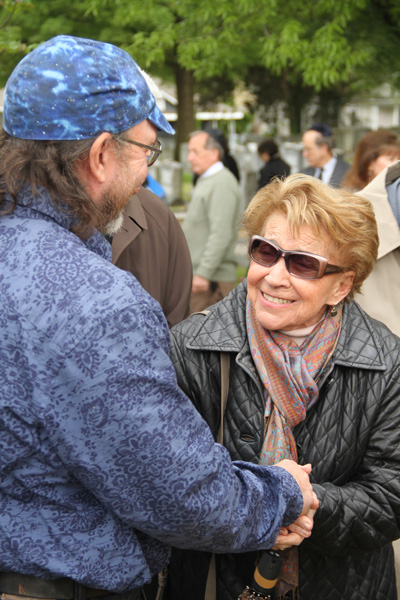
photo by Courtney Long
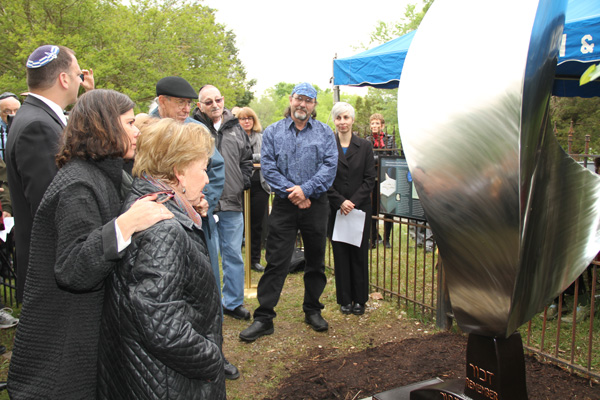
photo by Courtney Long
My thanks to my long time friend Steve Bell and David Klapper, a new friend, for helping to install the sculpture.
And to Vicki Smith a hearty thanks for the beautiful work on the signage explaining the context for the sculpture and
its setting.
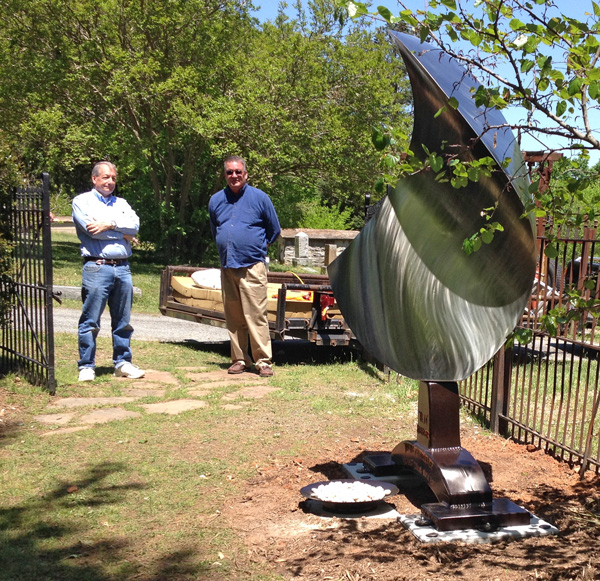
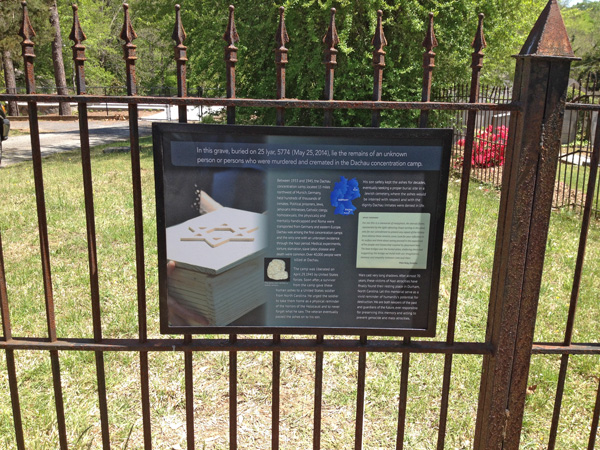
Finally, my words. Thank you for exploring this deep into this moving story.
“Remember”
The Durham Holocaust Memorial Dedication
- Mike Roig, Sculptor
Let me thank Mirinda Kossoff and Sharon Halperin, and this extended community that made it possible
for me to be a part of creating this memorial. We sculptors are often asked to create a physical presence
that stands in memory of individuals, but it is not often that we are asked to address events that carry the
historical significance this memorial references.
Here lie some of the remains of human beings subjected to the worst humanity has to offer in treatment
of fellow human beings. To me it was important to create a resting place of beauty for them. The ugly way
in which they were ushered from this world will not be the last word on their worth, their dignity, or their
right to be remembered with love. The oasis of beauty we’ve created for them here is what they deserve.
There is no direct illustration in this memorial of what they went through, but rather metaphors for how we
can think about our own relationship to their trial. The base bridges over the burial site, and it is a thought
bridge we need to travel from now to that past if we are to remember well, and know what to do if we are to
“not stand idly by” effectively.
The “eternal flame” in this sculpture will surely never extinguish. It moves according to the currents of air
like those interred here were moved and shaped by the flow of history, and like we are by the ever-evolving
now.
In its surface you will see a reflection of us all as we stand before it. It is necessarily indistinct and impressionistic,
and our reflected forms waver and distort as it moves, and that reflects a truth that in trying to see ourselves in
that history most of us cannot know with clarity how that history would have drawn us in, or how we would
have responded. There are those here that can because they were there, but for the rest of us we can only to
strive to conceive of a vision of ourselves where we would have responded with courage and dignity, empathy
and compassion, resistance and defiance. We need to do that so when we look on the times in which we do live
we put actions emboldened by these qualities to stopping a recurrence of the need for any future memorials like
this.
One quality of the reflections to be found in this stainless steel surface is that the closer you get, the clearer the
image. It’s a quality I had ample time to meditate on as I worked away with the polishing wheel. The key to
never having to see ourselves too clearly in this mirror of history is prevention. If we can learn to actively cultivate
the kind of tolerance and acceptance – and better still celebration - of our differences and individuality coupled
with the eager seeking of shared experience, knowledge and values, we might live our lives reveling in a broadly
defined vibrant community.
If we succeed in that the reflection of ourselves that we’ll be able to see in history of the kind these people lived
through will remain indistinct, and I for one will be grateful to live in peace, where I won’t be able to see myself
clearly in like circumstances. But without vigilance and genuine outreach to our fellow beings the opportunity will
arise again to see ourselves all too clearly in the mirror of our times. Let’s not go there, let’s not stand idly by.
Finally, there is the basin for the stones where you may leave the sign of your visit to this grave. But today you
will find stones with the word “remember” in Hebrew and English inscribed. Take one home with you in honor
of the original gesture of that long ago liberated prisoner who pressed the ashes into that soldier’s hand. Remember,
and maybe in the future you will meet someone who you would like to encourage to visit this memorial and you will
pass it on. Thank you.
4/26/15